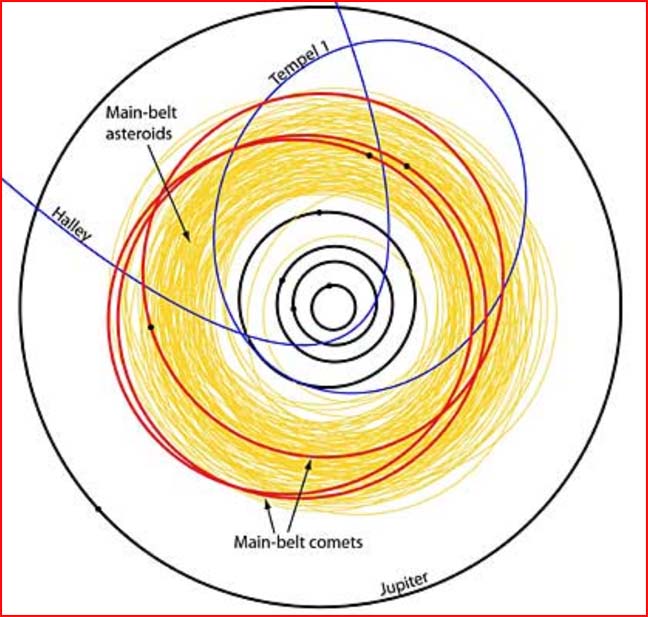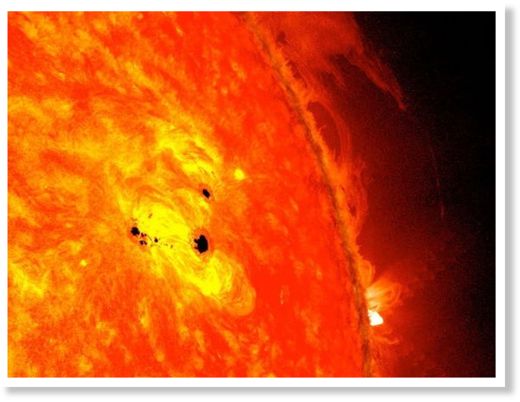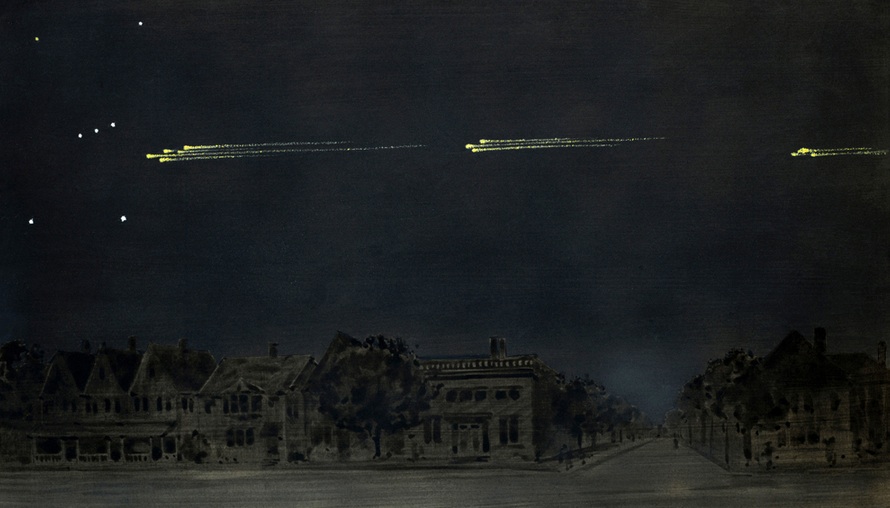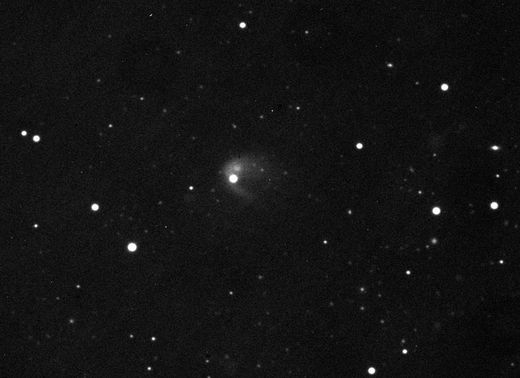
© Pedro Lacerda (Univ. Hawaii; Univ. Coimbra, PortugalOrbits of the three known main-belt comets (red lines), the five innermost planets (black lines; from the center outward: Mercury, Venus, Earth, Mars, and Jupiter), a sample of 100 main-belt asteroids (orange lines), and two "typical" comets (Halley's Comet, and Tempel 1, target of the recent Deep Impact mission) as blue lines. Positions of the main-belt comets and planets on March 1, 2006, are plotted with black dots.
The surprising discovery of asteroids with comet tails supports the longstanding claim of the electrical theorists - that the essential difference between asteroids and comets is the shape of their orbits.
According to a recent story in
USA Today, astronomers are "rethinking long-held beliefs about the distant domains of comets and asteroids, abodes they've always considered light-years apart". The discovery has forced astronomers to speculate that some asteroids are actually "dirty snowballs in disguise".
For many years the standard view of asteroids asserted that they are composed of dust, rock, and metal and that most occupy a belt between Mars and Jupiter. In contrast, comets were claimed to arrive from a home in deep space, most coming from an imagined "Oort Cloud" at the outermost reaches of the solar system, where they are supposed to have accreted from leftover dust and ices from the formation of the solar system.
But now, "the locales of comets and asteroids may not be such a key distinction", states Dan Vergano, reporting on the work of two University of Hawaii astronomers, Henry Hsieh and David Jewitt. In a survey of 300 asteroids lurking in the asteroid belt, the astronomers detected three objects that "look a lot like comets ... ejecting little comet tails at times from their surfaces". The three red circles in the illustration above describe the orbits of these bodies.






Comment: The answer is staring them in the face: we live in an Electric Universe!
The asteroid "sported a tail" because it became electrically charged.
The Electric Comet: The Elephant in NASA's Living Room?
When Asteroids Become Comets